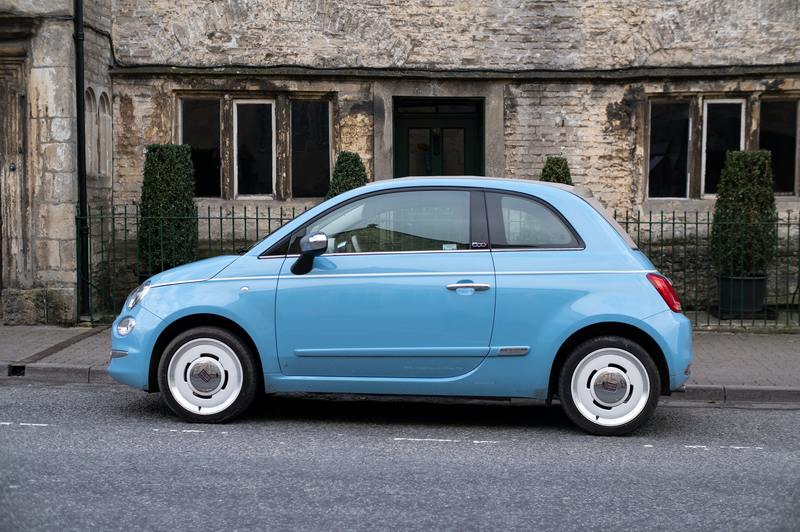Mold will likely grow in your car if you don’t use it for an extended period. Learning how to prevent mold in stored car can save you more work in the future.
Molds come in many varieties, and some are more dangerous than others. Certain types of mold, such as black mold, should be treated because they can be highly harmful to people.

It’s unpleasant in appearance and feel, but there’s a good possibility it smells terrible and poses a health risk. There are numerous reasons why mold might grow inside a car, but a water leak is most prevalent.
Keeping Mold Out Of A Stored Car
Step #1. Protect it from any possible water leak or moisture
Keep the moisture out of your car. Cover it up with a weatherproof car cover or in a garage if at all available.
Moisture is a significant factor in mold growth, so try to keep your automobile dry.
Step #2. Roll up the windows
Since you’re keeping your car stored, keep the windows shut and the doors closed. You will retain moisture and debris out of your vehicle, which will help prevent mold from growing.
Step #3. Spray some antimicrobial from time to time
Keep the interior of your car safe. Use an antibacterial cleaner to disinfect the interior of your vehicle.
You can kill mold development using these solutions, and they also work to keep new mold from forming. Also, if your car gets wet, protect your seats with protective coverings and your flooring with waterproof carpets to prevent moisture out.
Step #5. Have a cleaning schedule
Maintain the cleanliness of your vehicle by cleaning it on a consistent schedule. Cleaning helps to keep dirt and mold at bay, so be sure to maintain the interior of your automobile as spotless as possible to prevent the growth of any unwelcome mold.
Here’s another helpful guide on how to remove mold from the car exterior.
How do I find mold in my stored car?
The first step is taking the car out of the garage or the shade into broad sunlight. You can open the windows and leave them as you proceed to the second step.
Allow the automobile to vent the stale air and odor it has collected and open for the entry of fresh air into the house.
The next step is to remove any damp items or allow dampness to accumulate from your automobile.
Lastly, look for mold in every nook and cranny of the vehicle — seat belts, dashboard, roof, trunk, and wherever else. Typically, you can distinguish it as a circular piece of skin that you can paint in various colors.
If you notice mold on car seats, here’s a guide on how to clean mold off leather car seats.
How does mold grow in my stored car?
It is possible for mold to develop and spread throughout your vehicle in a variety of ways.
Initially, it may appear to be insignificant, but the mold can spread swiftly. The growth of mold can occur on a wide variety of surfaces.
As a result, you must be aware of and alert to any visible development that occurs. You can keep a watch on the dashboard, the seat, the mats, the area near the door, and other automobile areas.
In an automobile, there are a variety of factors that can contribute to the growth of mold.
- There is liquid on the floor
- Left windows that were open while raining
- An environment with high humidity
- An automobile parked in a dripping storage area
- Clothes that are wet in the car
- Flooding has caused significant damage.
How to remove mold in a stored vehicle?
Take into consideration more than smell when making judgments. A strong odor may be there, or none at all.
It depends on the type of mold present and what caused it to grow there. Similarly, if you notice a leak or have spilled something, it’s essential to wipe it up as soon as possible to avoid mold development.
You should make sure that you are purchasing the necessary supplies if using one.
Does car insurance cover mold?
Car insurance is an agreement between the owner and the insurer.
Considering standing up for you in covered occurrences, the insurance company wants you to pay your fees on time and maintain your vehicle. The premise is that the insurance provider has a right to demand to keep the car in good shape.
Some automobile issues are covered under routine maintenance. For example, if mold grows on the dash or the seatbacks, the automobile owner must remove it before it causes significant or permanent damage.
Insurance may also deny coverage if the windshield is too unclean to see out of and you are in an accident. Mold is not only excluded from vehicle insurance, but it also accelerates depreciation.
Conclusion
There you have it — knowing how to prevent mold in stored car can benefit you in the future. Ask for professional help if possible.

Great article. You has shown me that how to prevent mold in stored car. I know that If my car has mold, I should have it removed as soon as possible to avoid any health risks such as asthma attack, flu and more.
Have you ever noticed a mold build-up on the corner of your wall? Or maybe notice the mold on the fruit that was left on the table?